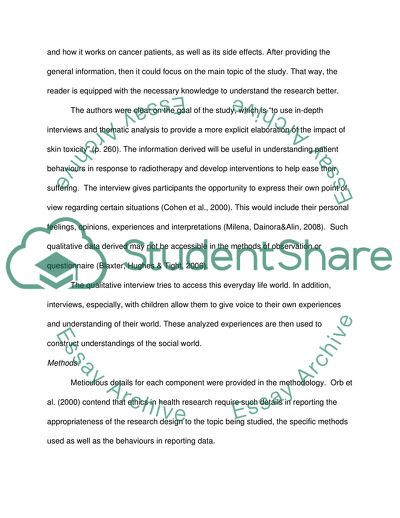Cite this document
(A Qualitative Analysis of Acute Skin Toxicity among Breast Cancer Coursework - 1, n.d.)
A Qualitative Analysis of Acute Skin Toxicity among Breast Cancer Coursework - 1. https://studentshare.org/health-sciences-medicine/1789981-critical-appraisal-of-a-qualitative-journal-article
A Qualitative Analysis of Acute Skin Toxicity among Breast Cancer Coursework - 1. https://studentshare.org/health-sciences-medicine/1789981-critical-appraisal-of-a-qualitative-journal-article
(A Qualitative Analysis of Acute Skin Toxicity Among Breast Cancer Coursework - 1)
A Qualitative Analysis of Acute Skin Toxicity Among Breast Cancer Coursework - 1. https://studentshare.org/health-sciences-medicine/1789981-critical-appraisal-of-a-qualitative-journal-article.
A Qualitative Analysis of Acute Skin Toxicity Among Breast Cancer Coursework - 1. https://studentshare.org/health-sciences-medicine/1789981-critical-appraisal-of-a-qualitative-journal-article.
“A Qualitative Analysis of Acute Skin Toxicity Among Breast Cancer Coursework - 1”. https://studentshare.org/health-sciences-medicine/1789981-critical-appraisal-of-a-qualitative-journal-article.


